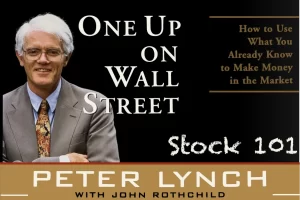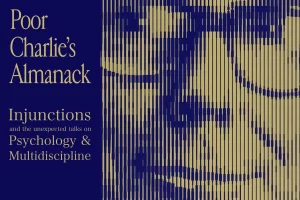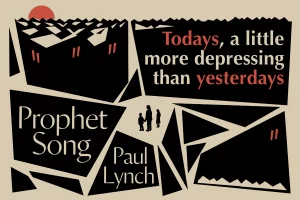History of Semiconductor
History of the Modern World

This is a history book of the world’s current most important industry, the semiconductor. It did a great job of selling the idea that the dynamics of silicon shaped the modern world. I would say it has done perhaps too good a job that it tingled some of my critical questioning senses. Deriving solely from the contents of this book, it almost seems like “why because of semiconductors, of course” could be a response to half the questions pertaining to modern history.
For example, based on the book, it seems that Japan’s prosperity after the second world war is owed to their success in gaining a sizable pie in semiconductors, mainly through consumer electronic devices. It does acknowledge their auto industry, but very briefly. This is in line with my prior knowledge that Japan had it’s great days in the 80’s, until what we call the lost decade, beginning in 1990. I want to hear what other sources have to say for their rise and demise. Even for how the cold war against the Soviet Union played out is seems to have been governed substantially by each sides’ semiconductor technology. If this is true, I gained a foundational, key understanding of modern history. For now, this seems too good to be true. The dynamic of the world couldn’t have such a one-size-fits-all explanation. Also, if this were true, why hadn’t this notion inundated major textbooks yet? It implanted a desire for me to read more about the histories of other industries, or geopolitics.
Anyhow, to solely judge the validity of the thesis, without regards to counter explanations, I think it was convincing.
Recommendation for Readers
Written from scratch by Meston Ecoa
No assistance was received from any form of Artificial Intelligence.
On p.xiii starts with Cast of Characters. I think this is good information, so I copied the entire section. I’ve added some more details for some of the figures.
Morris Chang: Founder of TSMC, the world’s most important chipmaker; previously, a senior executive at Texas Instruments
• 1931 – present
• Born in China → 1949: moved to the United States and attended Harvard & MIT, earns BS and MS in mechanical engineering→ 1955: Joins Sylvania Semiconductor and improves germanium transistor yields → 1958-1983: Texas Instruments. TI offers him to earn PhD in Stanford in electrical engineering in 1961 → 1984-1985: COO of General Instrument Corporation → 1987 founds TSMC
Andy Grove: Former president and CEO of Intel during the 1980s and 1990s; notorious for his aggressive style and success in reviving Intel; author of Only the Paranoid Survive.
• 1936-2016
• Born a Jew in Hungary → 1956: Escapes Hungarian Revolution and flees to the United States → 1958: Marries wife → 1960: BS in chemical engineering at City College of New York → 1963: PhD in chemical engineering at UC Berkeley → 1963-1967: Works at Fairchild Semiconductor → 1968-: Works at Intel, making his way up to CEO. Makes key decision to stop producing DRAMs and focus on microprocessors.
Hag Haggerty: Chairman of TI; led the company as it specialized in building microelectronics, including for the U.S. military.
Jack Kilby: Co-inventor of the integrated circuit, in 1958; longtime TI employee; winner of the Nobel Prize.
• 1923-2005
• Born in Missouri → 1947: BS in electrical engineering at UIUC → 1950: MS in electrical engineering at UW Madison while working at Centralab → 1958: Joins TI, invents the integrated circuit → 1983: retires from TI
Jay Lathrop: Co-inventor of photolithography, the process of patterning transistors using specialized chemicals and light; formerly of TI.
• 1927-2022
• Used photoresist from Kodak to create a mask on a germanium. Awarded $25k for the invention in 1958
Carver Mead: Professor at Caltech; advisor to Fairchild Semiconductor and Intel; visionary thinker about the future technology
• 1934-present
• Keywords: VLSI chip design, neuromorphic electronic systems, Moore’s Law, Mead-Conway
Gordon Moore: Cofounder of Fairchild Semiconductor and Intel; creator in 1965 of “Moore’s Law,” which predicted that the computing power on each chip would double every couple of years.
• 1929-2023
• Keywords: Shockley Semiconductor Laboratory, traitorous eight, Fairchild Semiconductor corporation, Moore’s Law, Intel
Akio Morita: Cofounder of Sony; coauthor of The Japan That Can Say No; represented Japanese business on the world stage during the 1970s and 1980s.
Robert Noyce: Cofounder of Fairchild Semiconductor and Intel; co-inventor of the integrated circuit in 1959; known as the “Mayor of Silicon Valley”; first leader of Sematech
• 1927-1990
• Keywords: IC made of Silicon, Monolithic IC
William Perry: Pentagon official from 1977-1981 and later Secretary of Defense from 1994 to 1997 who advocated using chips to produce precision-strike weapons.
Jerry Sanders: Founder and CEO of AMD; Silicon Valley’s most flamboyant salesman; an aggressive critic of what he saw as unfair Japanese trade practices in the 1980s.
Charlie Sporck: Drove the offshoring of chip assembly while leading manufacturing operations at Fairchild Semiconductor; later CEO of National Semiconductor.
Ren Zhengfei: Founder of Huawei, China’s telecom and chip-design giant; his daughter Men Wanzhou was arrested in Canada in 2018 on charges of violating U.S. law and trying to evade U.S. sanctions.
The biggest gap that I had to bridge, which I only accomplished after reading the book, was “what is a transistor”. This simple question eluded me. I would guess it’s owed primarily to my having not retained much from high school science classes, but partially due to the way it is described.
Trite descriptions used in the introductory sections of books and videos focusing on transistors say how there were only a dozen transistors in the earlier days and there are over a billion on an IC chip these days. Also, usually with an illustration of a light bulb, it says 1 represents on and 0 represents off. Then it would show a simple binary addition calculation, perhaps with light bulbs. At the same time they would say transistor is a switch. The transistor is a three pronged gadget with a black head. It would also say the first computers were made out of light bulbs. So the question became this. Say I want to calculate 3+5. I presume I would have to manually turn on lights that would represent 11 and 101 respectively, then where does the “+” happen?
This video starts in the same way. I think the problem is that these descriptions insinuate that transistors are the operands. The 3 and 5 in the example above. The input variables that would require manual input, or the temporary values that are needed to store, during the calculation. But some further digging down allowed me to realize that transistors – a switch – could be used in a circuit to work as an operator, in other words the “logic”.
This basic calculator in this video made me think, what part of pressing down the switch (the input) or the light bulb lighting up (the output) has to do with transistors? I get it has to do with binary, but with transistors?
This video shows how transistors work in conjunction to form operators. The “+” bit of the question. It started to make more sense. I think separating the two notions on vs. off, and the numerical values 0 or 1, and how both could be represented by a transistor is foundational to a faster understanding of the concept. Turns out a flash memory cell consists of a storage transistor with a control gate and a floating gate, so a particular type of transistor. It was said to have been invented in the early 1980s. DRAM, also was invented in 1967, it’s also transistors and capacitors in conjunction.
Searching designs of DRAM and SRAM quickly got me in a complicated space where I thought it wasn’t worth going deeper into, at least for now, I hoped the book delivered more technical aspects within the book. That way, readers could marvel at the feat of advancement. Pictures of chips and circuits, diagrams of circuit designs, images of famous figures or commercial products would have been a great aid.
Now I will conclude with some of my takeaways from this piece.
Even until the 80s it doesn’t seem like the U.S. occupied the status it has today. Japanese firms were doing great. Soviet Union disintegrated in 1991. The ascent of U.S. into world superpower was some series of right moves. They kept their technological lead, and implemented strategic hindrance to emerging powers at the right time.
No matter how good the idea is, it needs a market to grow. Unless the profit is so foreseeably sure in the future, the venture capitals and banks can offer so much capital. Most semiconductors share one thing in common. In order to survive, efficient mass production must be achieved, and there should be a market that can provide cash right now, that could fuel growth for the future.
The success of East Asia could be owed to their integration into Silicon Valley’s supply chains. Perhaps this is the way to survive for a non-superpower nation.
Companies and nations make right moves and bad moves. In hindsight one seems obvious and the other foolish, but in the present it must not be too apparent. The U.S. approved AMD’s licensing of x86 architecture CPUs to China. In the 2000s globalization was deemed beneficial for the U.S. leading to much offshoring. Intel held on to their production capability and explored fabrication business ending up losing both pillars – the design and manufacturing. Akio Morita made a foolish choice to co-author the book The Japan That Can Say No, expediting and confirming America’s doubts about their leadership. The Soviet Union tried to simply copy the Silicon Valley, without nurturing the ethos on which the industry runs and failed miserably. U.S. government funds that was poured into reviving photolithography was in vain. Of course there were countless more bad decisions and good decisions.
Perhaps market crash and war is like a musical chair game. It’s a musical chair game where one has to do something productive while the music is playing or it would get left behind. But a greater consequence would occur if one is unable to secure a seat when the music ends. In peaceful times or when the market is expanding and waking up from its pessimism, it is beneficial to use credit and liquidity to your advantage. However, when the music ends, you need a seat. The seat, in the market would be cold-hard cash, and in war, it would be advanced arms. When trust is depleted, cash and missiles are what companies and nations would turn to.
The U.S. leveraged its influence on international choke points of the semiconductor industry when suppressing Chinese growth. It was providing security to major allies that manufacture chips in East Asia. It had ancillary parts manufactured domestically, and design softwares from local companies that allowed them to prevent the sales of high-tech chips to China. However, China’s integration in the world supply-chain outside of semiconductor domain gives them leveraging power as well. It could cut-down cheap commodities exports that the world depends on. In this age of interdependence, every global citizen is enjoying the cutting-edge gadgets, the high valuation of their stock portfolio based on the belief that it would continue growing, the cheap food enabled by cheap labor and brighter sunlight somewhere else on Earth, the conditioned air from electricity made by burning non-local oil. No one is fully independent, but I guess it’s strategically important to be producing goods that have less supply, and inelastic demand. It’s also impossibly difficult to establish a supply-chain entirely on one soil. It seems that the Chinese have failed that two times. The U.S. seem to want to be doing that, but it would be hard I suppose.
All the important figures foundational to starting a new company, or breaking-ground in a new country, was recruited from people working in leading companies in leading nations.
Some Information
• 356 pages
• Vocabulary level: Medium-Easy
• Library of Congress Subjects: Integrated circuits industry, Microelectronics–History, Competition, International, International relations, World politics.
• Goodreads Genres: Nonfiction, Business, History, Technology, Politics, Economics, Science
• Year of publication: 2022
• Meston’s Rating: 4.5










